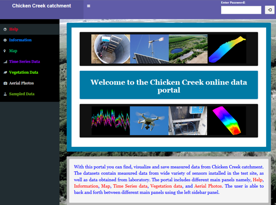
Since 2005, the " Chicken Creek " research platform has provided opportunities to study ecosystem development from a defined "point zero” as the mining restoration of the area resulted in the application of a sandy substrate without any other biological components. The primary succession has not been influenced by anthropogenic measures, allowing for the observation of natural ecosystem development self-organization. The site enables the development of a local groundwater body and the investigation of feedbacks between hydrological, geomorphological, and botanical structural elements.

Since September 2005, the autonomous development of the “Chicken Creek” catchment area has been accompanied by an environmental monitoring program. The ecosystem development progress slowly and are replaced by feedback processes of an established ecosystem (e.g. Badorreck, 2025 link to the paper) The initial character of the system is no longer dominant. Despite these changes, the comprehensive monitoring data offer diverse opportunities for further research. Monitoring results are published freely accessible in the "Ecosystem Development" series.
[read more about the monitoring program ...]
We are also represented as a research site in the DEIMS-SDR (Dynamic Ecological Information Management System - Site and dataset registry) database:
The initial character of the system is no longer dominant. Despite these changes, the comprehensive monitoring data offer diverse opportunities for further research. In addition to continuing the data series, moderate use of invasive methods is now possible, allowing for deeper analyses and new connections to previously collected data. Future research will focus on transformative landscape development and climate change. The research topics here concentrate on nutrient and carbon cycles of ecosystems and in particular on the tree species robinia, as well as on soil stability and hydrology.
The central Data Portal provides access to the data series of the monitoring program. Time series and data points are available in graphical form.

